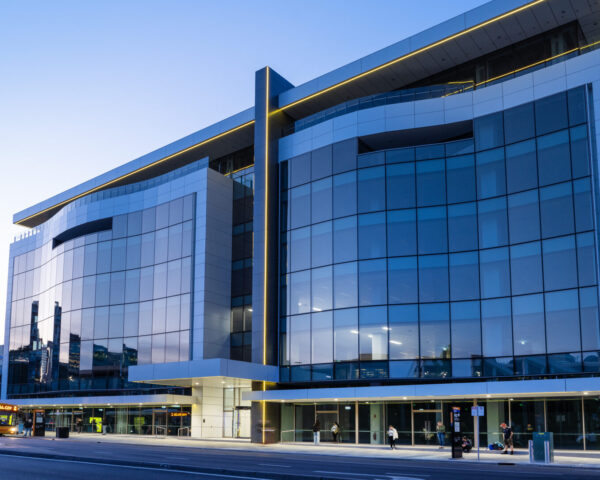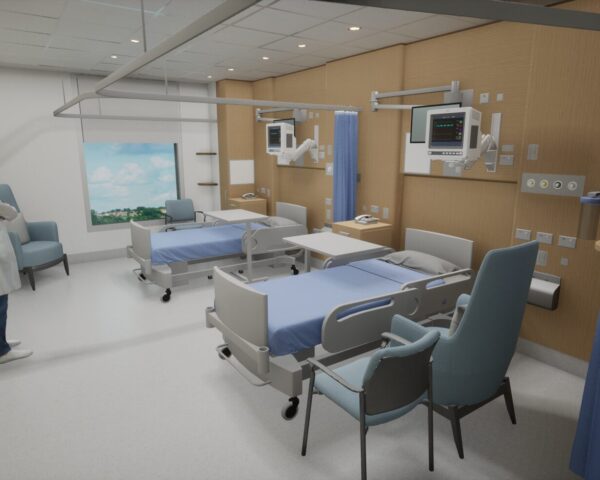Virtual Reality (VR) is an increasingly powerful tool in project planning and stakeholder engagement – particularly where spatial clarity, functionality, and user input are essential to project success.
Built Environs has developed specialist in-house capability to turn complex BIM models into fully interactive virtual environments. These experiences give clients, consultants and end users the opportunity to explore and interrogate key spaces long before construction begins – leading to more informed decisions, improved alignment, and reduced design risk.
How it works
Virtual Reality uses computer-generated 3D environments to simulate real-world conditions. By combining VR with platforms like Unreal Engine, our digital team creates lifelike simulations of operating rooms, changerooms, treatment spaces, and more.
These environments are:
- Built from existing BIM and digital engineering models
- Enhanced through coding, rigging, lighting and material mapping
- Experienced using a VR headset at true 1:1 scale
- Populated with realistic, interactive elements such as equipment, joinery, lighting systems, and articulated fixtures
Unlike static renders or 3D animations, these simulations respond to user interaction, enabling live exploration of room layout, circulation, functionality and services.
Developed and delivered in-house
All VR environments are created by Built Environs’ internal digital engineering team. This direct control offers clear benefits:
- Fast turnaround of updates and refinements
- Seamless alignment with design and delivery teams
- Live adjustments during workshops and engagement sessions
- Immediate response to issues or feedback
This in-house model removes reliance on external consultants and ensures continuity throughout the design and review process.
Solving practical challenges
In many complex projects, physical mock-ups can be valuable for validating design – but often aren’t feasible due to time, space, or budget constraints.
Virtual Reality helps overcome these limitations by offering a flexible and cost-effective alternative:
- Replaces multiple physical prototypes with interactive virtual simulations
- Provides better spatial clarity than traditional drawings or renders
- Enables real-time testing of layout, functionality, and user flow
Identifies potential issues early, helping to minimise rework and delays
Unlocking smarter project outcomes
Integrating VR during design and early engagement delivers clear, measurable advantages:
- Improved decision-making: True-to-scale environments gives users clarity around spaces, layouts, and movements
- Reduced rework and risk: Design assumptions can be tested and refined before construction begins
- Accelerated feedback cycles: In-house capability allows for rapid adjustments and real-time responsiveness
- Greater cost efficiency: Virtual walkthroughs reduce reliance on time-consuming and expensive physical prototypes
- Aligned teams, clearer outcomes: A shared visual experience improves collaboration across stakeholders and disciplines
Supporting better project delivery
By incorporating VR into the early design process, Built Environs is helping project teams make faster, better-informed decisions. This capability adds significant value to projects where spatial performance matters – from clinical environments to elite sport, and community facilities.
Backed by an in-house team of digital engineering specialists, our VR solution supports a more agile, collaborative and risk-aware delivery model.
________________________________________
Learn more about our project expertise: https://builtenvirons.com.au/projects/


